India's flower that blooms every 12 years
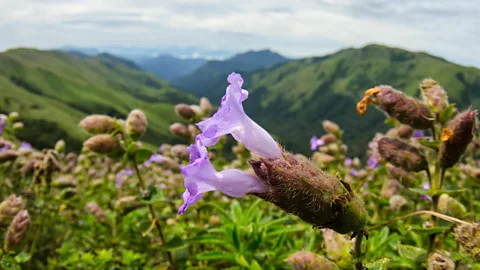 National Geographic Image Collection/Alamy
National Geographic Image Collection/AlamyOne of the rarest flowers in the world, the Neelakurinji blooms just once every 12 years in India’s south-western state of Kerala, when it covers the hills in a violet hue.
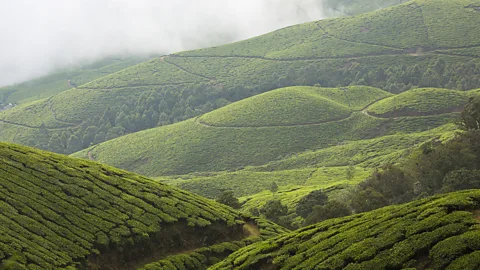 Mayank Soni
Mayank SoniIn Kerala – famous for its tropical vegetation, idyllic beaches and scenic backwaters – lies the sleepy town of Munnar, situated in the Western Ghats mountain range. Lying 1,600m above sea level, Munnar is known for its tea, coffee and spice plantations, which, along with the lush views and misty mountains, have made the town a beloved tourist destination.
It is here where one of India’s best-kept secrets lives: the Neelakurinji, one of the world’s rarest flowers, which blooms only once every 12 years. And this year, it has bloomed again.
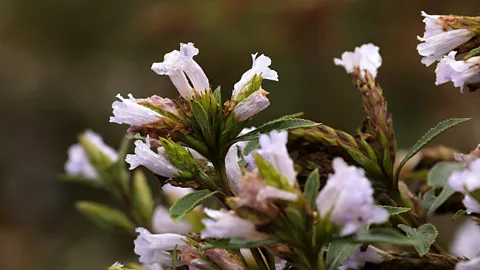 Mayank Soni
Mayank SoniThe Neelakurinji (often shortened to ‘Kurinji’) is a Strobilanthes, which is a genus of around 350 species of flowering plants, 59 of which are spread across peninsular India. Many different species of the Strobilanthes have different blooming periods. Some bloom after four, eight, 10, 12 or even 16 years. But the growth of most of them is patchy and virtually unnoticeable. The tea and spice plantations, as well as increasing construction and widening of roads, has taken over the land where these flowers might have otherwise bloomed.
The Strobilanthes kunthiana, the Neelakurinji (meaning ‘blue flower’), however, is hard to miss as it blooms in mass and grows in protected areas. It carpets the hills in shades of blue that turn violet towards the end of the season, which typically begins in August and lasts until October. This ‘super bloom’, occurring once every 12 years, covers a large area, including its protected area, Kurinjimala Sanctuary, about 45km from Munnar.
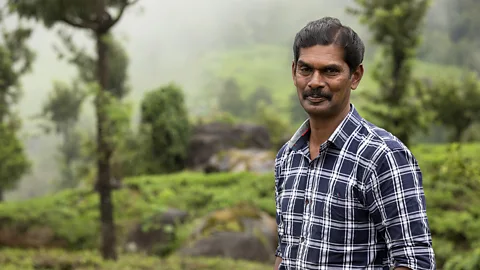 Mayank Soni
Mayank SoniSeeing the Neelakurinji is extremely special, because you think, maybe I won’t be around for the next time. Twelve years down the line, maybe I’m living somewhere else because of a job or marriage... maybe I’ll be dead,” said R Mohan, environmental activist.
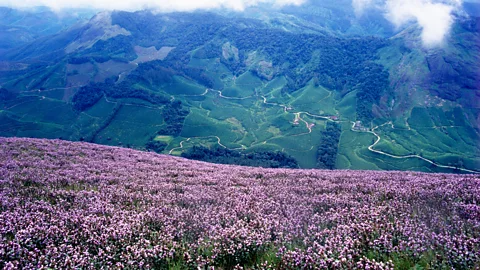 DARKROOM/Balan Madhavan/Alamy
DARKROOM/Balan Madhavan/AlamyThe Neelakurinji is a monocarpic plant, meaning that each shrub reproduces once after flowering and then dies, and it takes a particular period for the new seeds to bloom. The mass flowering every 12 years helps the survival of the plant, as so many seeds are produced so that predators cannot eat them all. It also provides the best chance for the flowers to be seen and studied.
A rare flower that doesn’t grow anywhere else in the world, the Neelakurinji has several cultural associations in India. Roy Mathew, a former editor at The Hindu, writes in his book, Kurinji: The Flower of the Blue Mountains, that the Muthuvan tribe, a forest-dwelling community in Kerala, believe the flower to be a symbol of love and romance. Their god, Lord Muruga, married Valli, a tribal hunter girl, by weaving a garland of Neelakurinji flowers around her neck. The Paliyan tribe, a nomadic community in the Western Ghats, calculates age by the number of Neelakurinji flowering cycles one has seen.
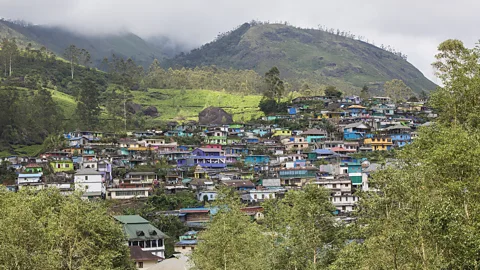 Mayank Soni
Mayank SoniWhile the local lore has its own significance, the Neelakurinji bloom is also important for the area as it brings with it a surge in tourism. A super bloom means that the hills will be carpeted with the flowers in rows varying from 30 to 60cm in height, which can be easily spotted in and around town. In 2018, all of Kerala, especially Munnar, was busy preparing for surplus bookings.
“We renovated our resort this year,” said Harish Chawda, owner of a popular wellness retreat 4km from town. “Not just us, everyone was preparing. The government began widening the roads along the hills, local restaurants geared up, everyone was very excited.”
Close to a million tourists were expected – and then disaster struck.
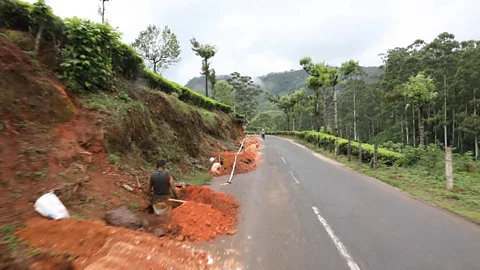 Mayank Soni
Mayank SoniDuring August’s Kerala floods, more than 483 people died, tens of thousands were evacuated and more than 10,000km of roads were destroyed. Crores of rupees in property were destroyed, and the loss of income due to tourist cancellations was unfathomable. Given the devastation to the land, how did the Neelakurinji stand a chance? The flowers need at least 10 days of continuous sunshine to bloom, and they had yet to flower when the incessant rainfall plagued the state.
“Nobody expected this,” Chawda said. “The main airport of the state was closed for several days. For one whole month, we had no tourists at all. That has never happened in all the time I’ve lived here. In the beginning of September, the sun came out again, the Neelakurinji finally bloomed... but there was no-one to see them.”
Eravikulam National Park, a 97-sq-km conservation area for the region’s flora and fauna, was supposed to be the main draw for tourists seeking the Neelakurinji. However, many of the shrubs here were washed away by rain, and there hadn’t been enough sunshine for the remaining flowers to bloom. Those wishing to view the Neelakurinji had to go to other destinations at higher elevations, such as Top Station and Vattavada in Kerala, and Kolukkumalai in the bordering state of Tamil Nadu.
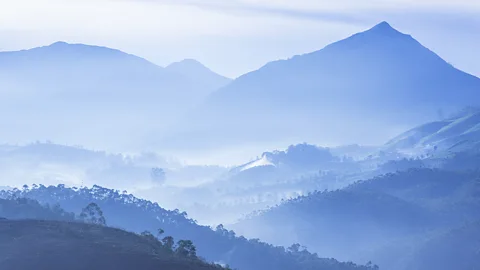 Mayank Soni
Mayank SoniThe Kurinji bloom has been less than expected. The hills are generally blanketed with Neelakurinji by September, but this time we have to trek to different spots for a view,” said Antonyn Thomas, adventure tourism guide.
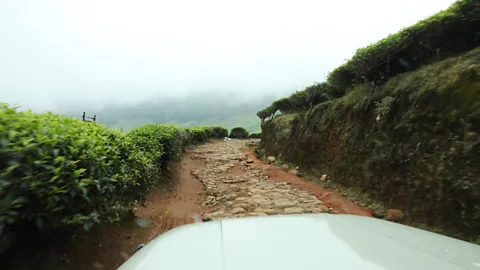 Mayank Soni
Mayank SoniThe journey to Kolukkumalai – an area with significant Neelakurinji cover, and considered the world’s highest tea plantation sites – is a difficult one, befitting the pursuit of a rare flower. From Munnar, it’s 30km to the settlement of Suryanelli and then 18km uphill over a dirt road.
It is an extremely bumpy ride that must be made in a 4x4, but the views are worth the trip, with clusters of Neelakurinji covering the edges of the Kolukkumalai peak enveloped in the area’s characteristic mist.
 Mayank Soni
Mayank SoniPerhaps even more elusive than Neelakurinji flowers is the honey derived from them, called Kurinjithen. The mass flowering attracts an increase in bees for pollination, which ultimately leads to this rare honey. Yet access to the honey is very complex, if not impossible; only the local tribesmen are allowed to collect it, and it hardly ever reaches the market, barring a few shops located deep in the Shola grasslands of the mountain valleys.
The locals believe this honey has medicinal properties that prevents heart blockages, although no specific study has been done, owing to the rarity of its production. Also, it is impossible to know which flowers the honey comes from, which only adds to its complex nature.
“See, Munnar and surrounding protected area is home to various kinds of flora, and there is no way to know whether a bee has only been to the Kurinji flower for nectar,” Mohan said. “Most of the honey made here is a form of ‘joint honey’, a combination of different flowers. Yet during the mass flowering of Kurinji flowers, it can be conservatively estimated that at least 35 to 70% of honey, depending on which area it comes from, would be from the Neelakurinji.”
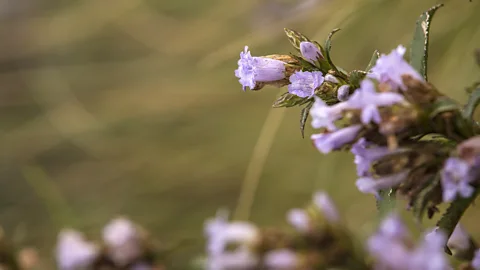 Mayank Soni
Mayank SoniThese are flowers so rare they fade from living memory. They should bloom next in 2030, but after that, their survival is a big question mark,” Mohan said.
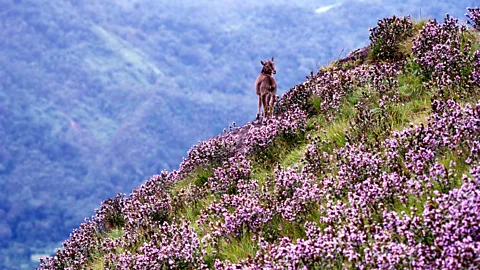 LENS AND LIGHT/Balan Madhavan/Alamy
LENS AND LIGHT/Balan Madhavan/AlamyIn the face of changing weather patterns, land development and increasing agriculture, it has become more important than ever to protect the area’s natural habitats and preserve species like the Neelakurinji. Eravikulam National Park alone is home to wide variety of rare flora, and it was with that in mind that the NGO Save Kurinji Campaign Council, which raises awareness about conservation through campaigns and trekking expeditions, was started in 1989.
According to campaign coordinator Ansar Mangalathop, “It was through the work of the council when in 2006 the government declared 3,200 hectares of Kurinji habitat near Munnar as a Kurinji sanctuary. If what we do brings about even a little change that enables another generation to see the Neelakurinji, it’s still worth it.”
(Text by Srishti Chaudhary; video and photos – unless otherwise noted – by Mayank Soni)
The World’s Rarest is a BBC Travel series that introduces you to unparalleled treasures found in striking places all across the world.
